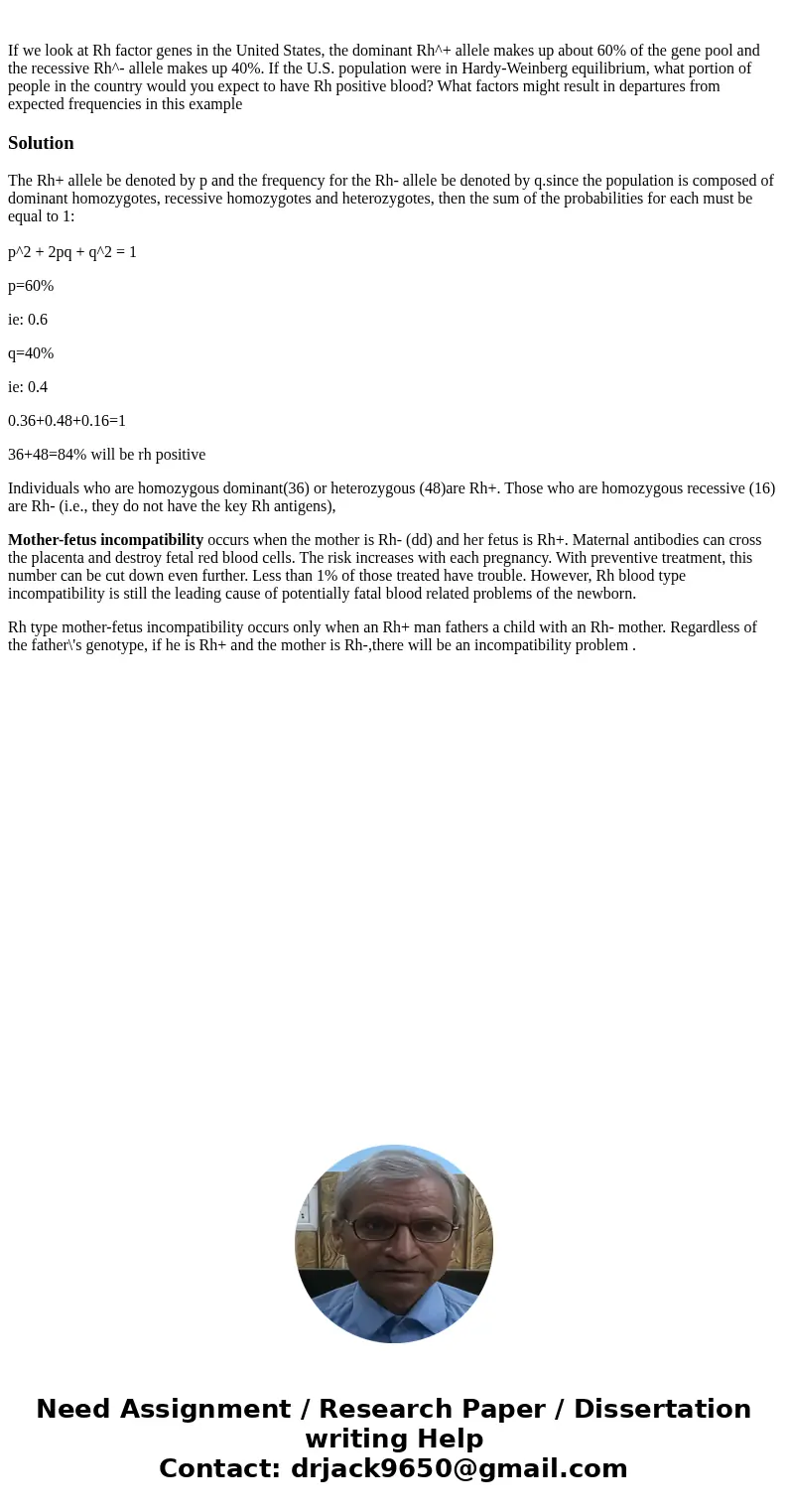If we look at Rh factor genes in the United States the domin
Solution
The Rh+ allele be denoted by p and the frequency for the Rh- allele be denoted by q.since the population is composed of dominant homozygotes, recessive homozygotes and heterozygotes, then the sum of the probabilities for each must be equal to 1:
p^2 + 2pq + q^2 = 1
p=60%
ie: 0.6
q=40%
ie: 0.4
0.36+0.48+0.16=1
36+48=84% will be rh positive
Individuals who are homozygous dominant(36) or heterozygous (48)are Rh+. Those who are homozygous recessive (16) are Rh- (i.e., they do not have the key Rh antigens),
Mother-fetus incompatibility occurs when the mother is Rh- (dd) and her fetus is Rh+. Maternal antibodies can cross the placenta and destroy fetal red blood cells. The risk increases with each pregnancy. With preventive treatment, this number can be cut down even further. Less than 1% of those treated have trouble. However, Rh blood type incompatibility is still the leading cause of potentially fatal blood related problems of the newborn.
Rh type mother-fetus incompatibility occurs only when an Rh+ man fathers a child with an Rh- mother. Regardless of the father\'s genotype, if he is Rh+ and the mother is Rh-,there will be an incompatibility problem .

 Homework Sourse
Homework Sourse